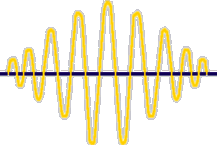

For several years now, Dr. Sally Lusk has been leading a team in the research of prevention of noise-induced hearing loss (NIHL) and other side-effects of occupational noise. Dr. Lusk has been using the team approach to capitalize on the different specialty skills each team-member brings to the group.
Dr. Lusk herself...
Dr. Madeleine Kerr
Statistician Dr. David Ronis...
Project manager Brenda Eakin
Associate Professor Emerita, Vi Barkauskas
Research Associate II Statistician, Anamaria Kazanis
Doctoral Student, Delbert Raymond
Dr. Oi Saeng Hong

Construction workers represent a diverse and mobile population, exposed to various types of noise in conjunction with other safety hazards, on many different job sites. It is estimated that one quarter of the five million construction workers in the US are exposed to average daily noise levels above 85 dBA (considered unsafe for 8 or more hours per day). However, there are no data regarding prevalence of NIHL or level of use of hearing protection by this population. While it is preferable to reduce noise exposure through engineering controls, it is not feasible to eliminate all harmful noise; this fact holds especially true on construction sites. Consistent use of hearing protection equipment prevents NIHL, an irreversible impairment with very significant monetary and personal costs. Knowledge of what factors motivate workers' use of hearing protection (in other words, the predictors of this behavior) is essential to the design of more effective training programs.
The purpose of this project is to prevent NIHL in construction workers through improved training, based on a conceptual model (the Health Promotion Model), in use of hearing protection. The training was also designed to be tailored for construction workers.
There are four specific aims in this project:
This study has been conducted with two distinct samples, regional and national, in three phases:
This study has provided much needed data in a variety of areas:
Additionally, the study has resulted in a customized training program for the prevention of NIHL in construction workers through the increased use of personal hearing protection. By developing the individual worker's consistent use of protective equipment, safety measures can be transported from construction site to construction site, despite the limited options for environmental control. This training package is available from the American Industrial Hygiene Association.
The predictor-based training program intervention had a significant effect on plumber/pipefitters' use of hearing protection devices (HPDs). This effect was demonstrated while controlling for other effects by random assignment in a Solomon Four-Group design and through use of covariance analyses.
A comprehensive, accurate, high quality training program for construction worker's use of HPDs was developed and is being distributed nationally. The final product incorporated feedback from users and reviews by consultants.
The Health Promotion Model (HPM) (Pender, 1987) proved to be a useful conceptual model for explaining construction workers' use of HPDs, accounting for about one-half of the variance in their use. Predictors from this model provided the basis for the training program intervention which was developed and tested through the project.
Construction workers' use of HPDs is inadequate to prevent noise-induced hearing loss, with self-reported mean use of HPDs ranged from 18% to 49% of the time when they should be used (working in high noise) by the three trade groups studied: carpenters, operating engineers, and plumber/pipefitters. Large proportions of these construction workers reported exposure to hight noise and perceptions of hearing loss, with some reporting hearing loss found through a hearing test.
Analyses of the data from the Solomon Four-Group design showed that the pretest measurement of predictors of use and measurement of actual use of HPDs did not have significant effect on post-intervention use of HPDs. Written questionnaires to measure workers' perception of HPDs and predictors of their use were validated, with acceptable reliability for use with these trade groups of construction workers.

The long-range goal of this research is to determine the effects of noise exposure on cardiovascular and stress-related diseases. This feasibility study focused on three main issues:
For the feasibility study, a non-random sample of roughly 400 hourly workers completed written questionnaires measuring psychosocial, lifestyle and demographic characteristics, and had baseline measures of blood pressure, pulse rate, height, and weight. Multiple regression analyses identified the relationship between long-term noise exposure and symptoms of cardiovascular and stress-related diseases (baseline blood pressure is the primary indicator, but workers' reports of symptoms and diagnoses are also used). These data will be available in the coming months.
A subsample (n=46) of this group wore electronic monitoring devices to simultaneously measure blood pressure, pulse rate, and noise levels during their shift of work. The output was checked for gaps in the data recording and explanations for such gaps were sought from the events diary completed by the worker. Strength of association between noise, blood pressure, and noise sensitivity are being examined. Workers' feelings about wearing the devices were also obtained.
Results from this feasibility study will enable the development of a large scale study to explicate the relationship between noise exposure and psychosocial factors, lifestyle, and physiological measures. Knowledge of these relationships could lead to several outcomes:
Finally, prevention programs, developed from this research, that reduce cardiovascular and stress-related diseases will improve quality of life and reduce costs of providing extensive and high-priced care for these illnesses.
![[research/book]](sally_images/studres.gif)
At the School of Nursing, students are always encouraged to get more involved in the research process. Undergraduate students can fill a very important role in a research team, learn more about research in their field of interest, and have fun doing it! There are also plenty of opportunities for Master's and doctoral level students to perform important duties within a research group while gaining access to a data set for their own thesis or dissertation. For more information, contact Dr. Sally Lusk or another faculty member. Or, check out the undergraduate and graduate research opportunities below.
![]() Undergraduate Research Opportunities (UROP)
Undergraduate Research Opportunities (UROP)
![]() The Office of Financial Aid (OFA) Work Study Opportunites (for undergraduates and graduates). You can also reach the OFA at 2011 Student Activities Building, 515 East Jefferson, Ann Arbor, Michigan 48109-1316, 313.763.6600 (telephone), 313.747.3081 (facsimilie). Try their web site as well, which is currently under construcntion on the University's administrative page.
The Office of Financial Aid (OFA) Work Study Opportunites (for undergraduates and graduates). You can also reach the OFA at 2011 Student Activities Building, 515 East Jefferson, Ann Arbor, Michigan 48109-1316, 313.763.6600 (telephone), 313.747.3081 (facsimilie). Try their web site as well, which is currently under construcntion on the University's administrative page.



